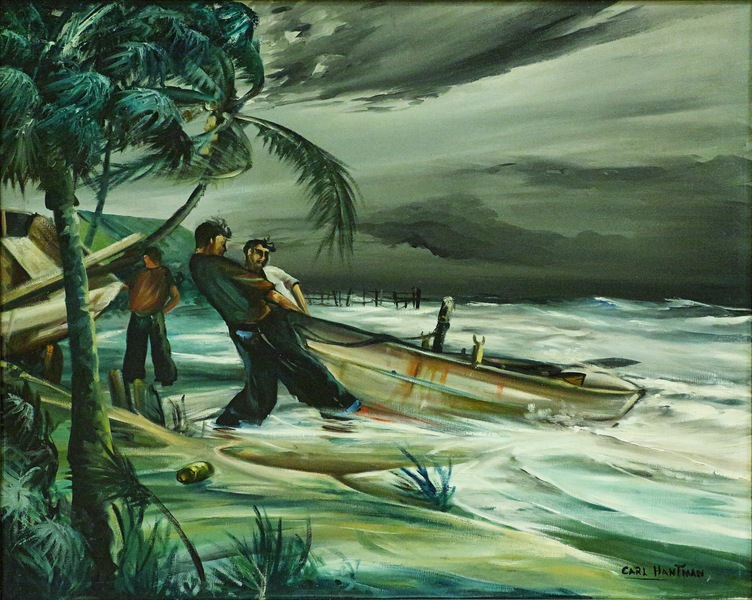
Cici and Hyatt Brown Museum of Art
France Family Gallery
Open through December 8, 2023
Mastery of the palette and technique are required for painting the Florida atmosphere. Careful adjustments to color, specifically tinting – adding white - and shading – adding black, enhance the overall sense of the quality of the light at a particular time. The artist depicting Florida must have the knowledge to create an overall effect that unifies the image and convinces the viewer of the climatic conditions. Atmospheric perspective – perception of distance created by gradual lightening of color plus the blurring and diminished size of objects – is also used to great effect in Florida paintings because of the far vistas available in the State.
Florida is nicknamed the “Sunshine State” with good reason. Daylight in the State has a greater intensity as measured in both quantity and quality than any state to the north. The intense sun often reflected off sand or water, visually bleaches all colors. To represent the colors on canvas requires the addition of white to the palette. The palette is also tonally higher – the colors are purer - than, say, the palette with a more moderated spectrum used by the Dusseldorf School to portray scenes in Northern Germany. To accomplish this, the colors are highly tinted – white is used to lighten most of the palette. For the Florida landscape, the lessons from the American Hudson River and the Luminism Schools about painting the atmosphere are more germane.
But then there is the other Florida light. Florida is known for weather that changes with uncanny speed. Devastating storms quickly roll onto the land from the surrounding oceans. Those tropical rains gray-out the light and shift the whole palette down in value, darker in hue and deeper in saturation.
Sun, rain, wind, clouds, storms and fog all play a part in what the artist sees and wants to capture. The annual weather cycles change the visual elements. Florida’s long topographic profile also adds to the great diversity of weather. The climate of the north and central parts of Florida is humid subtropical. South Florida has a tropical savanna climate. It is the artist’s desire to fully depict the weather as it affects all aspects of the composition. The color, technique, rhythm and texture are all focused to evoke the full sensation of what is Florida’s revealing environmental trait.